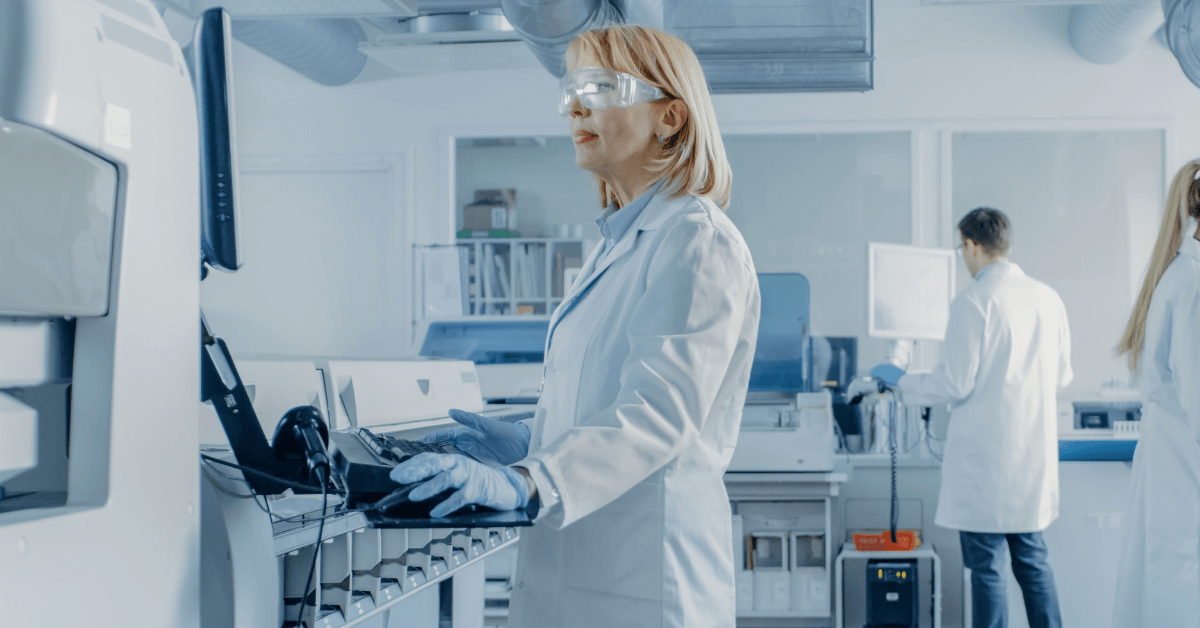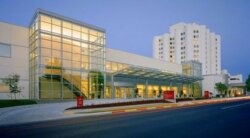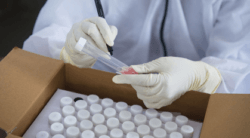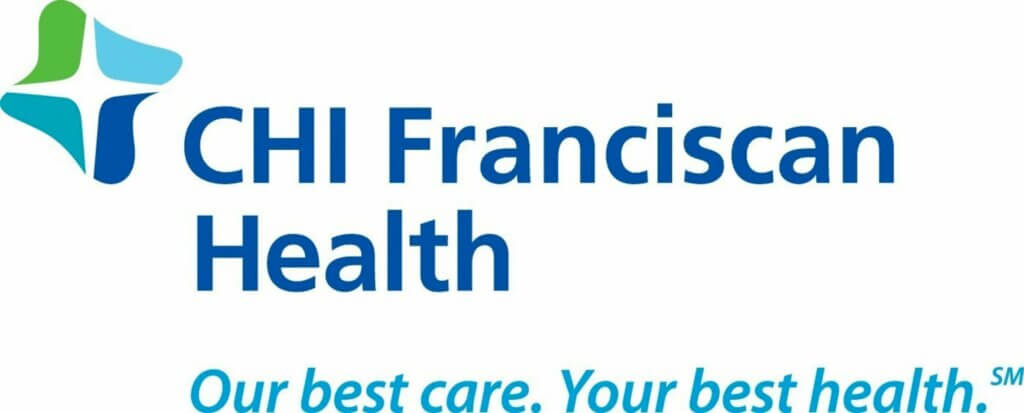March 30, 2021

Pandemic Problem Solving: Building the Ship While Sailing the COVID-19 Tidal Wave
An Interview with CHI Franciscan’s Lab Director Tracy Bradfield
When the pandemic struck, the clinical laboratories at CHI Franciscan’s eight hospitals in and around Tacoma, Wash., had no COVID-19 testing capabilities. Creative and decisive thinking by the system’s lab director overcame the challenges and prepared the system for future public health emergencies.
In January 2020, the Centers for Disease Control and Prevention confirmed the first case of COVID-19 in the U.S. in Snohomish County, just north of Seattle. Within weeks, the CHI Franciscan health system, based in Tacoma, just south of Seattle, found itself in the epicenter of the country’s first COVID-19 outbreak. Suddenly, hundreds then thousands of people experiencing COVID-like symptoms needed to be tested for the potentially lethal virus.
Making that happen at CHI Franciscan fell to Tracy Bradfield, the system’s Division Director of Laboratory Services and Transfusion-Free Medicine and Surgery. In that role, Bradfield oversees the clinical lab operations at each of the system’s eight acute-care hospitals. She had to make immediate changes to meet testing needs then, and determine how to make COVID-19 testing a part of their system’s regular operations.
By the end of 2020, CHI Franciscan expanded services at the 366-bed St. Joseph Medical Center in Tacoma and built out a lab at the 242-bed St. Michael Medical Center in Silverdale. Both labs have full-service microbiology departments running a range of PCR assays, as well as hematology, coagulation, urinalysis, chemistry and Transfusion Medicine. The six other hospitals run smaller labs, none with their own microbiology departments. Historically, the eight labs all run 24/7, and conduct an average of about 400,000 tests monthly, for all types of tests provided. 4sight Health on behalf of MedSpeed, CHI Franciscan’s logistics and medical courier provider, had the opportunity to interview Bradfield about how COVID-19 affected the system’s lab operations and how the experience prepared CHI Franciscan for future surges in COVID-19 cases.
When did you first hear about COVID-19 and what was your initial reaction?
Bradfield: Like most people, I first I heard about COVID was when it was confirmed in Wuhan, China, in December. My first reaction was, “Wow, that’s really terrible and tough for the citizens there.” I didn’t immediately think that it wouldn’t stay there. Then within just a few weeks we had the first confirmed case in the U.S. right here in Washington. Now we know it was probably in California much earlier.
When did you first realize that this was going to be a big problem in the U.S.?

St. Joseph Medical Center
Bradfield: That moment is quite vivid in my memory because we were planning a trip back home to New Zealand. Our flight was leaving on Sunday, March 1, and I was watching television on Saturday, the day before, on Feb. 29. That’s when the CDC reported the first death from COVID in the U.S. Before we departed for our two-week trip, I updated CHI Franciscan lab leaders and senior leadership about the lab’s response plan for testing and the predicted impact to our institution’s blood supply.
Were you able to enjoy your vacation?
Bradfield: It was not very relaxing. I spent most of my time checking and responding to emails and monitoring the rapidly evolving situation back home. It was challenging. Then we flew out of New Zealand on a Thursday night and the following morning New Zealand closed its borders. If the flight was canceled or we had missed it for some reason, I’d still be there. It was very dramatic. And when I got back, it was very clear that something big was arriving on our doorstep.
How did the outbreak impact your labs initially? What were the immediate challenges?
Bradfield: We were overwhelmed almost immediately. We had no COVID testing capacity. The FDA hadn’t approved the PCR test methodology yet. Our analyzer could do it, but we didn’t have the emergency use authorization to use the analyzer for that purpose. We could take samples but had no way of testing them. So, we used the existing courier system to take samples collected by each of our labs to the University of Washington for testing.
With COVID tests, the University would tell us the results for each patient with a turnaround time of 24 to 36 hours. That was the best anyone could get. But before COVID, samples were only going to the University once a day, so they might sit in a lab at the hospital for 20 hours. That had to change.
How did you change that system to get your clinicians faster results?
Bradfield: Not knowing if a patient was positive really challenged the front-line caregivers, who had to handle each patient as if he or she had COVID until they had a definitive result. Working with our partner MedSpeed, we set up a process for COVID sample pickup from each hospital every two hours, 24×7. In those regular two-hour courier loops, samples from the smaller labs moved to the main microbiology labs on the return leg, so all samples moved across our system more quickly. That was a great sideline benefit, since it accelerated results for all acute care and ED testing.
When did you start doing your own COVID testing?
Bradfield: We started doing our own testing in April. But the demand for tests exceeded our allocation of test kits. So even when we were doing our own tests, we still were sending most samples to the University via MedSpeed. We’re part of Catholic Health Initiatives, which is now part of CommonSpirit Health. Even though we were still somewhat short on kits, our association with CommonSpirit was a real game-changer because the system had enough leverage to get us more test kits in our labs. As you may remember, every hospital in the country was competing for test kits not to mention supplies like swabs, transport media and PPE. It was a mad scramble. With the power of CommonSpirit, we received 500 test kits a week.
What was your test kit allocation and how did you spread that across your eight hospitals?
Bradfield: We spread them across all our hospitals based on urgency. That could be an asymptomatic patient who needed urgent surgery or a severely symptomatic patient who needed immediate attention. We would courier those urgent tests 24/7 to St. Joseph within 90 minutes through MedSpeed and get those results back in about two hours. 
At your peak, how many COVID tests were your labs doing per week?
Bradfield: Eventually when supply caught up with demand, we got all the test kits that we needed. Our peak was in August when we were doing nearly 2,500 COVID tests a week in house. We dropped a bit after that, and we stopped sending out to UW in October. But by early November we were back up to about 2,000 a week. Those are just from our eight hospital labs.
Did test results affect other areas of operation than patient care?
Bradfield: In the beginning, we were actually using the test results to allocate the use of PPE in our different hospitals, for general patient care and specific needs like an extended surgery. For example, as our lab saw COVID test volume increasing in certain geographies, we used those insights to notify the supply chain team of potential outbreaks. They then repositioned additional PPE at those facilities, using MedSpeed to cross-dock the materials at their hub. This resulted in advanced notice for our supply chain teams, making our system more adaptable.
Did you have any staffing challenges in your labs and, if you did, how did you manage them?
Bradfield: It was feast or famine. Half the time we didn’t have enough staff because people were sick or had symptoms and we had hundreds of tests to do. Other times we had too much staff as testing workload dropped due to cessation of routine procedures. This was true not just for COVID tests but also for other diagnostic tests tied to elective procedures or prevention and wellness. Patient volume dropped and so did the lab work. We had to furlough people, then bring them back. We also relied on agency staffing to fill any gaps.
Looking back, what did you learn and what lessons can you share with your peers?
Bradfield: COVID is not in our rearview mirror. We’re all still submerged in this crisis. We’re all still learning. Certainly, I wouldn’t suggest that we know all the answers. But one thing is clear. We all learned how important labs are, especially during a public health emergency like a pandemic. As well as testing, the logistics systems can make an enormous difference in care. If you underinvest in your lab, you’ll be dependent on other institutions like academic medical centers to help you out in a crisis. Hospitals need to invest more in their labs and become more self-reliant.
What are you doing considering your experiences to become more self-reliant?
Bradfield: We opened our own molecular department at St. Joseph in January. It will be capable of performing a variety of state-of-the-art molecular and genetic diagnostic testing. We remodeled space. We installed new instruments. We’re validating instruments now and training the staff. We’ll be able to do all that work for ourselves. We’ll own it. We’ll control it. And that will improve our ability to care for our own patients.
What do you think COVID’s legacy for labs will be?
Bradfield: Labs were never really supposed to be the focus. They’re supposed to be like electricity. You flip a switch, and the lab goes on. When COVID hit, we flipped a switch but there was no power. And suddenly, labs become this gigantic focus very quickly. I started having weekly meetings with our chief medical officer and other clinical leaders to hear what they need, what changes they’re implementing in care so we can support it. The crisis showed us the necessity of investing in labs and maintaining robust lab capabilities and testing capacity. Failing to do that leaves you, your patients and your communities vulnerable. They need and deserve better.
Thanks to the folks at MedSpeed for introducing us to Tracy Bradfield at CHI Franciscan. We know the pandemic stretched laboratory operations in 2020, and we can all learn from organizations that managed the challenges well.
Read another pandemic profile of Bill Christie at Virtua Health about the supply chain solutions he implemented at the system in 2020.
Tracy Bradfield, Division Director of Laboratory Services and Transfusion-Free Medicine and Surgery at CHI Franciscan
Tracy Bradfield has been the Laboratory Directory at the CHI Franciscan health system for over 9 years, overseeing labs at 8 hospitals that run 24×7, processing over 400,000 tests a month. Learn More To learn more about CHI Franciscan, please visit the system’s website.






